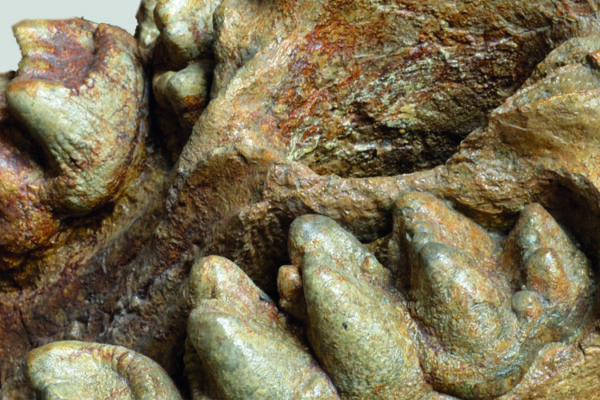Woolly Mammoth Tusk
Mammuthus primigenius

Quaternary: Pleistocene: Late Pleistocene,
approy. 40.000 years old
Bürgstadt, Lower Franconia, Bavaria, Germany
The extinct woolly mammoths were the only proboscideans adapted to cold habitats and typical inhabitants of the ice-age mammoth steppes of Eurasia and North America. Like today’s elephants, they bore a pair of tusks in their upper jaw, but they were more strongly curved and considerably longer, reaching a maximum length of 4.50 meters.
SNSB-BSPG
Original






